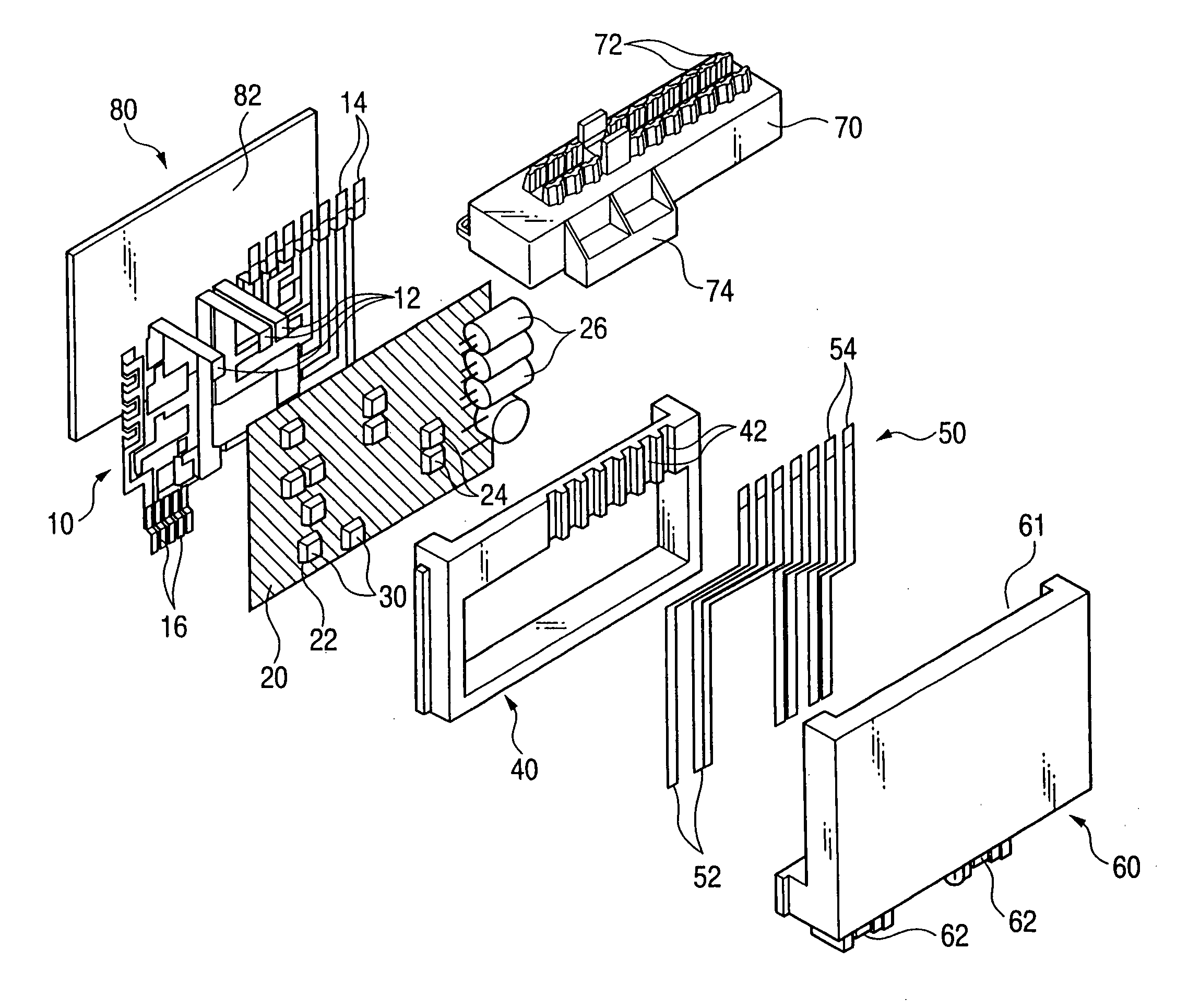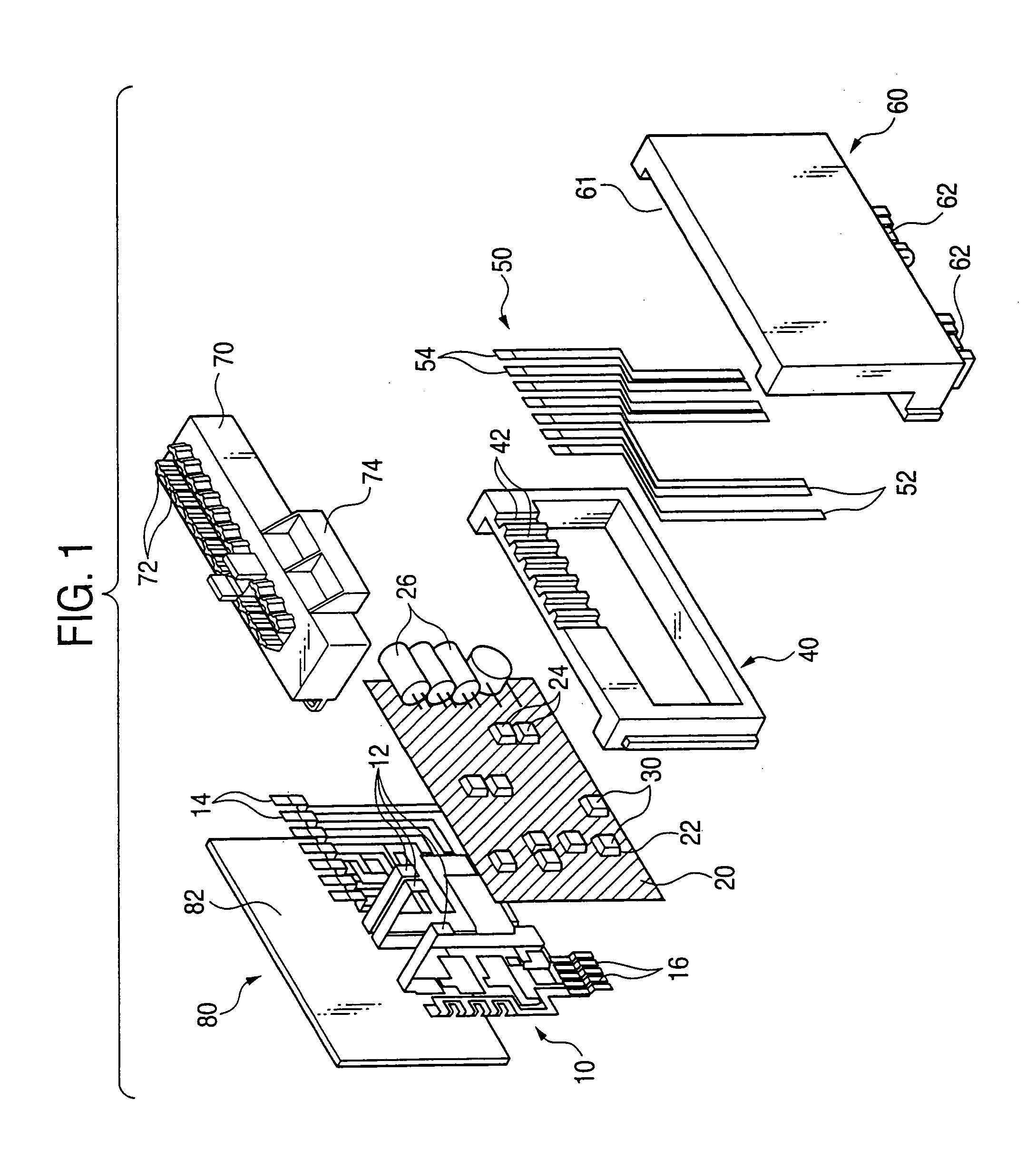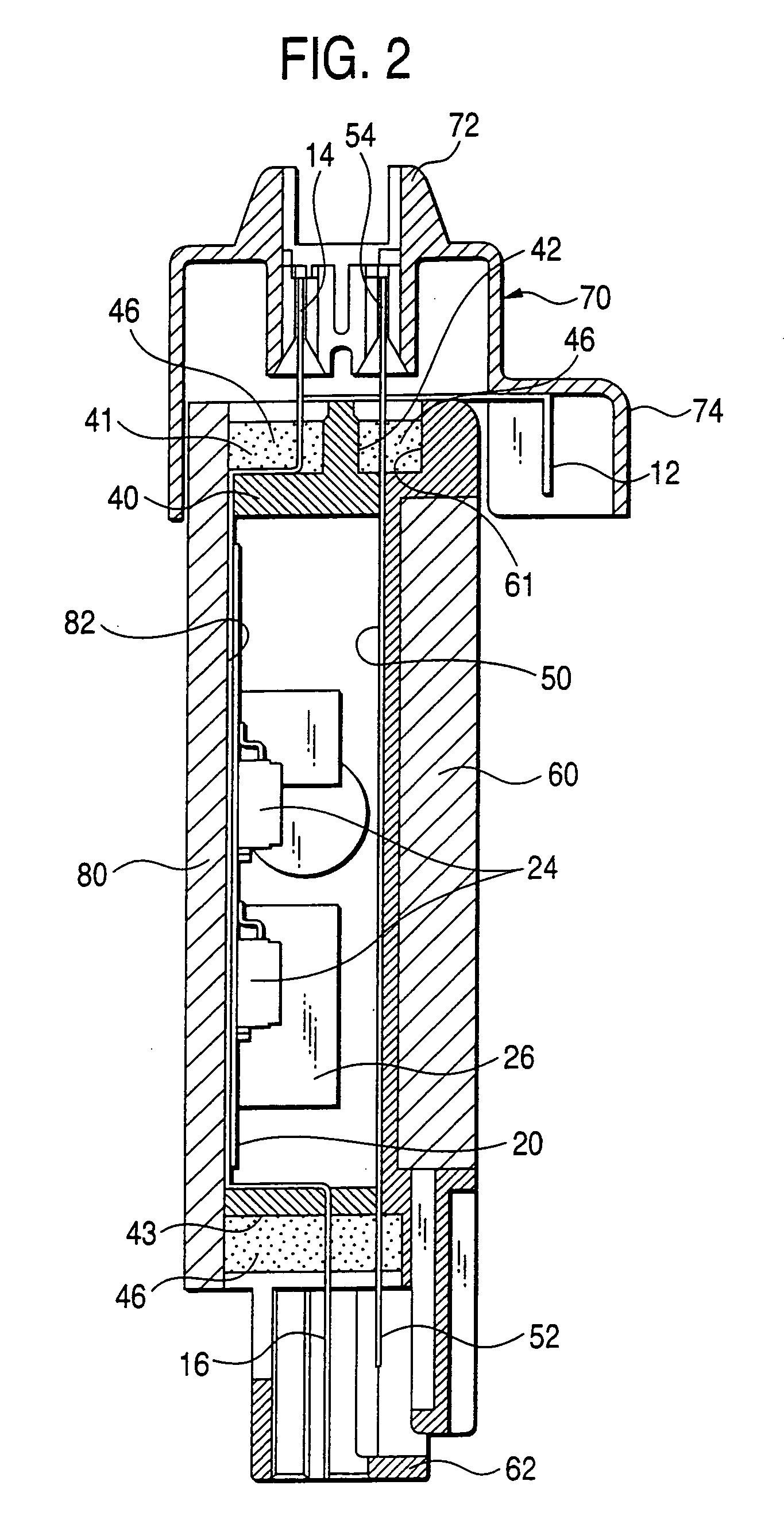Circuit-constituting member and circuit unit
a technology of circuit unit and circuit board, which is applied in the direction of electrical apparatus casing/cabinet/drawer, casing/cabinet/drawer details, coupling device connection, etc., can solve the problems of large radiating member, complex and large radiating member, and heat generated by fets, so as to reduce stress in thus mounted terminals.
- Summary
- Abstract
- Description
- Claims
- Application Information
AI Technical Summary
Benefits of technology
Problems solved by technology
Method used
Image
Examples
example 1
[0040]Conductor patterns are formed on both of opposite sides (front and reverse surfaces) of the control circuit board 20, and an adhesive is coated onto the reverse-side (upper side in FIG. 1) pattern or the bus bar-constituting plate 4, and this reverse-side pattern is adhesively bonded to the upper surfaces of the bus bars. In this case, only the pattern, which will be at the same potential as the bus bars, is provided on the reverses side of the control circuit board 20.
example 2
[0041]An insulative adhesive is coated onto the reverse side of the control circuit board 20 or the upper surface of the bus bar-constituting plate. An insulating layer is formed between the control circuit board 20 and the bus bars by this adhesive. In the case where the control circuit board 20 includes through holes, it should be taken care that the insulative adhesive is not adhere to these through hole portions.
example 3
[0042]An adhesive is coated only onto edge portions of the reverse side of the control circuit board 20. This control circuit board is bonded to the upper surfaces of the bus bars. In this case, the bonding areas are only these edge portions, and the control circuit board 20 and the bus bars are free relative to each other at an area inside the bonding areas. Therefore, stresses are reduced.
[0043]3) The relay switches (FET) 30, which are semiconductor switching elements, are connected to both of the control circuit board 20 and the bus bar-constituting plate 4, utilizing the through holes 22 formed in the control circuit board 20. Here, when a distal end portion of the coil-side terminal 36 is stepped upwardly relative to a distal end portion of the contact-side terminal 34 by the thickness of the control circuit board 20, the terminals 34 and 36 can be connected to the bus bar group 10 and the control circuit board 20 regardless of the thickness of the control circuit board 20 with...
PUM
 Login to View More
Login to View More Abstract
Description
Claims
Application Information
 Login to View More
Login to View More - R&D
- Intellectual Property
- Life Sciences
- Materials
- Tech Scout
- Unparalleled Data Quality
- Higher Quality Content
- 60% Fewer Hallucinations
Browse by: Latest US Patents, China's latest patents, Technical Efficacy Thesaurus, Application Domain, Technology Topic, Popular Technical Reports.
© 2025 PatSnap. All rights reserved.Legal|Privacy policy|Modern Slavery Act Transparency Statement|Sitemap|About US| Contact US: help@patsnap.com



